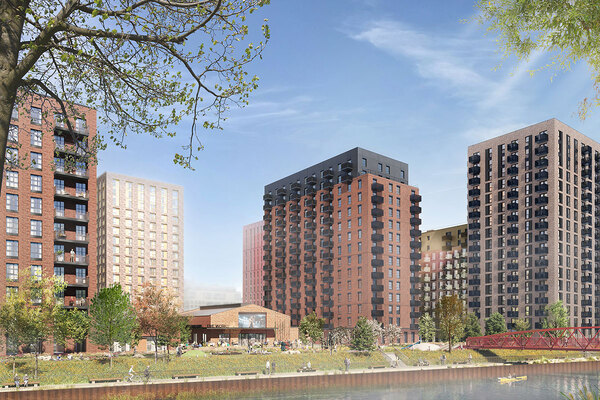
Wherever older people live, they need the right care and support in place
A new commission is examining housing for older people. Ewan King explains the findings so far
I was listening to the news on the radio on the day it was announced that relatives could go back into care homes to hold the hands of their loved ones. All good news – although listening to the report you’d be forgiven for thinking that a care home was the only option if you needed care in older age.
Where do older people live and what’s the level of care and support in their accommodation? Well, they live in care homes, retirement communities, retirement housing, supported living, Shared Lives schemes, their own homes and elsewhere.
“We are all look forward to a healthier later life, but without choice many people end up in the wrong accommodation that doesn’t reflect their needs”
We’re leading a commission with the purpose of looking at how we create genuine choice for older adults – and the commission has concluded that housing settings don’t always provide the choice and availability for people should they need to draw on care and support.
This is a pressing concern, as the population is ageing and demand for social care is rising. We all look forward to a healthier later life, but without choice many people end up in the wrong accommodation that doesn’t reflect their needs.
Planners and developers are building more age-friendly housing with access to care, but surveys tell us that people lack choice and that demand is outstripping supply. There must be a dramatic increase in the supply of accommodation options that see older people accessing quality care and support.
In the first report from the Commission on the Role of Housing in the Future of Care and Support, we provide an overview of the key issues facing the sector, and outline a vision for the future.
“Local commissioning must be much more driven by the needs, desires and choices of older people, including people living with dementia”
We now need a national strategy that invests in dramatically increasing the number and choice of places to live in that provide access to personalised care. The evidence shows that extra-care or retirement communities, for instance, can help people maintain their independence and avoid hospital admissions, but we have only 70,000 units (countries such as New Zealand have built proportionally far more).
Changes also need to be made locally; local commissioning must be much more driven by the needs, desires and choices of older people, including people living with dementia. We need more purchasing decisions to be based on the needs, desires and choices of older people.
Above all, we need a change in mindsets, so that care and support go hand-in-hand with where people live – and the two need to be sustainable.
The commission was set up to develop an evidence-based vision and roadmap for housing in the future of care and support. We’ve identified a number of features that need to be addressed in the future, for instance, that housing needs to be in the right place.
People should be able to access housing that facilitates care and support, in both a place they want to live in and a community with which they identify.
But housing also needs to promote independence and shared decision-making – what we in social call ‘co-production’, whereby both the people providing and the people drawing on care and support work in partnership to design what the person needs. Involvement of people who draw on care and support, in discussions about where they live, should be widened and deepened.
“By using co-production, local leadership and deep local knowledge of the needs of communities, we can make sure that housing facilitates good care and support for the years to come”
To deliver this vision, every area should have a full spectrum of housing options, including supported living and Shared Lives schemes, retirement communities, retirement housing, and care homes.
These options must all be available to meet the needs of a growing number of older people, including those who are living alone. There is strong evidence of the links between suitable housing and health outcomes in later life; by using co-production, local leadership and deep local knowledge of the needs of communities, we can make sure that housing facilitates good care and support for the years to come.
Care homes have rightly been the focus of much mainstream media reporting on social care. But while they’re absolutely right for some, they aren’t the only option for people who access care and support. Joined-up thinking across the health, social care and housing budgeting and planning is long overdue.
Do join us as we continue this discussion. As we’re at the start of our journey we don’t pretend to have all the answers. The report is also a discussion paper so we want your views.
Ewan King, deputy chief executive, Social Care Institute for Excellence
Please get in touch with the commission’s secretariat via Rebekah.Luff@scie.org.uk to share any thoughts on this paper and examples of good practice
Sign up for our care and support newsletter
Already have an account? Click here to manage your newsletters











